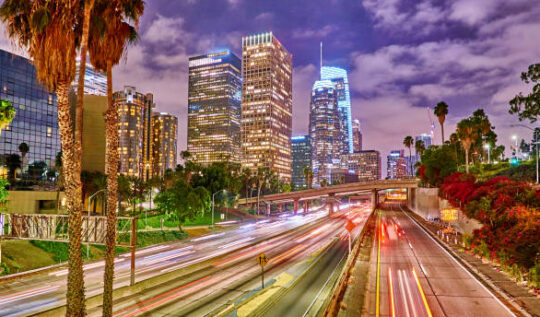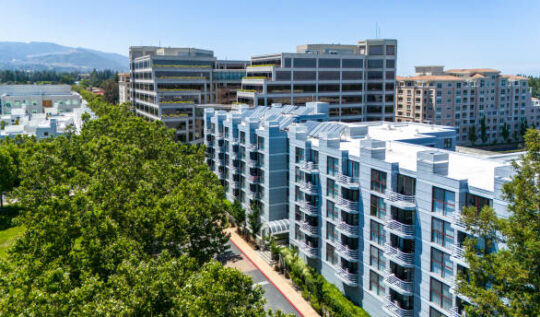When Did Los Angeles Start Subdividing Lots to Build Two or Three Homes Deep?
Los Angeles is no stranger to change, especially when it comes to real estate. If you’ve spent any time driving through neighborhoods like Mar Vista, Culver City, or North Redondo, you’ve probably noticed it too: deep lots that used to host one single-family home now have two, sometimes three, homes stacked one behind the other.
Table of Contents
ToggleSo what gives? When did LA start subdividing these lots? And why?
The Short Answer: It Depends on Where You’re Looking
Lot subdivision in Los Angeles didn’t begin at one single moment. It’s been a slow burn over the last century, driven by housing demand, city policies, and state-level laws. In some neighborhoods, like Culver City, this practice has been around since the early 20th century. But in others, particularly suburban areas, more recent legislative shifts have opened the door for homeowners and developers to build multiple units on previously single-family lots.
Let’s break it down.
🏘️ How LA Got Here: Subdividing Deep Lots
🕰️ Early 1900s – Flag Lots Begin
Developers in Mar Vista and Culver City divided large horse-property lots. Deep driveways led to rear units—later called flag lots.
🏗️ 1950s–60s – Post-War Expansion
LA allowed denser housing in areas like South LA and the Valley. Duplexes, triplexes, and small apartments replaced single homes.
🏙️ 1980s–2000s – Quiet Rezoning
R1 zones reclassified as R2/R3/R4. Developers built townhomes and condos. Redondo Beach led aggressive upzoning efforts.
🏡 2016–2020 – ADUs Go Mainstream
State legislation fast-tracked backyard units. AB 881 made permits easier. Deep lots gained second and third units legally.
📜 2021 – SB9 Lot Split Law
SB9 allowed legal lot splits + 4 units on former single-family lots. Adoption is slow due to red tape, but it’s the law today.
🔍 What You’re Seeing in LA Neighborhoods:
- Long driveways → ADU or flag lot
- Two homes stacked deep → likely ADU + JADU
- Condos or triplexes → built under R3/R4 rules
- Vacant lot with 2 homes under construction → SB9
⚖️ Why It Matters:
- LA must add housing without sprawling
- Lot splits = affordable, family-friendly density
- Zoning reform is slow, but ongoing
- Investors can tap into off-market deep-lot gems
The Early Days: Horse Properties, Deep Lots, and Gentle Density
Some of LA’s earliest subdivisions go all the way back to the early 1900s. In neighborhoods like Mar Vista, developers originally parceled out large lots—many over 20,000 square feet—with the expectation that people might want gardens, horses, or just privacy.
But as LA grew, so did the need for housing. Over time, some of those deep lots were subdivided. Sometimes officially, through legal lot splits. Other times, unofficially, with family members or tenants living in an added rear unit.
You’ll still see this today: older lots with a long driveway leading to a second or even third unit in the back. In planning terms, these are often called “flag lots”—because from above, they look like a flag on a pole. The original house sits up front, and the new unit is tucked in back.
The Post-War Boom: Room to Build, Demand to Fill
After World War II, Los Angeles boomed. Returning veterans needed homes, and LA had space. The 1950s and ’60s saw massive suburban growth, but even during this time, the city experimented with more density.
In neighborhoods like South LA and parts of the Valley, zoning changes allowed small apartment buildings or duplexes on what had been single-family lots. Many of these homes still stand today, and they laid the foundation for LA’s flexible (and sometimes chaotic) housing layout.
One Reddit commenter even noted that their block had a six-unit apartment approved via a variance back in the 1970s—long before new housing laws made it easier.
The Quiet Shift: 1980s–2000s
In the 1980s, cities like Redondo Beach made headlines for rezoning whole neighborhoods from R1 (single-family) to R2, R3, or even R4, allowing for higher density.
It wasn’t always clean. Corruption, favoritism, and backroom deals sometimes played a role. But the result was clear: single homes were demolished to make room for condos and townhomes. Some neighborhoods adapted. Others didn’t.
And while zoning maps changed, not every homeowner took advantage. Many large lots remained underdeveloped for decades—until the 2010s brought a new wave of housing pressure.
Enter the ADU Era: A Game-Changer for LA
By the mid-2010s, LA was deep into a housing crisis. Prices were soaring. Wages weren’t keeping up. And nearly 80% of the city’s residential land was still zoned for single-family homes.
So the state of California stepped in.
Starting in 2016, a series of bills began streamlining the Accessory Dwelling Unit (ADU) process. These “granny flats” or “backyard homes” became wildly popular. Homeowners could now add a second unit to their lot without needing to go through expensive rezoning or public hearings.
By 2020, with the passage of AB 881, ADU approvals became even easier. That’s when the real growth began. Suddenly, all those deep lots in Mar Vista and Culver City had new potential—not just for adding a second unit, but sometimes a third, with both an ADU and Junior ADU.
SB9 (2021): The Lot Split Law
In 2021, Senate Bill 9 (SB9) went even further. It allowed homeowners to legally split a single-family lot into two, and build up to four units where previously only one was allowed.
But there’s a catch: SB9 hasn’t been used as much as lawmakers hoped.
Why? Cities, while technically required to comply, have been slow to adopt easy permitting processes. Local opposition, confusion, and bureaucracy have all slowed implementation.
Still, SB9 is now law, and over time, it’s likely to change the shape of LA housing even more. For now, many of the 2–3 deep homes you’re seeing are likely the result of ADUs or older flag lot divisions—some going back decades.
The Present Day: A Patchwork of Housing Types
If you look at a satellite map of Mar Vista or Culver City, you’ll see it: rows of deep lots, some with a single house, some with two, and others with three. In many cases, these are a mix of:
Flag lots, created long ago
ADUs, permitted since 2016
SB9 lot splits, starting slowly in 2022
Duplexes or triplexes, built under old R2/R3 zoning
Zoning in LA is famously complex. Two lots on the same street might have completely different rules, depending on overlays, past variances, or quirks in city planning.
If you’re curious about a specific property, you can look it up on ZIMAS (the City of LA’s zoning information map). It’ll tell you the current zoning, lot size, and any past approvals.
Why It Matters: The Future of LA Housing
All of this might seem like planning trivia, but it has big implications. LA is in the middle of a housing shortage. The city needs more homes—and not just high-rises downtown, but in existing neighborhoods where jobs, transit, and services already exist.
Building 2–3 homes on a formerly single-home lot is one of the least disruptive ways to meet that need. It adds housing without major infrastructure changes. And it lets families age in place, earn rental income, or house multiple generations on the same property.
Of course, not everyone’s on board. Some longtime residents fear that more units mean more cars, more noise, or a loss of neighborhood charm. Others welcome the change, especially younger buyers priced out of the single-family market.
In Summary
The trend of building multiple homes on deep lots in Los Angeles started over 100 years ago in some areas, but it’s picked up significantly in the last 10 years thanks to changes in state laws like:
ADU legislation (2016–2020)
Ongoing zoning reform efforts in LA
If you’re seeing new construction pop up in backyards, driveways, or unusually shaped lots, it’s likely the result of one of these tools.
As LA continues to grow, this patchwork of density will probably become the new normal. So next time you drive down a leafy street in Mar Vista and see a long driveway leading to a second home, you’ll know—it’s not a mistake. It’s history, policy, and necessity, all rolled into one.
Want to explore this further or look into investing in subdividable lots? Let us know and we can help you dig into zoning codes, permitting steps, and what to watch out for.
Let’s build smarter, not just bigger. Call us at (818) 233-0750 or contact us online to get the best consultation and quick permit approval.





